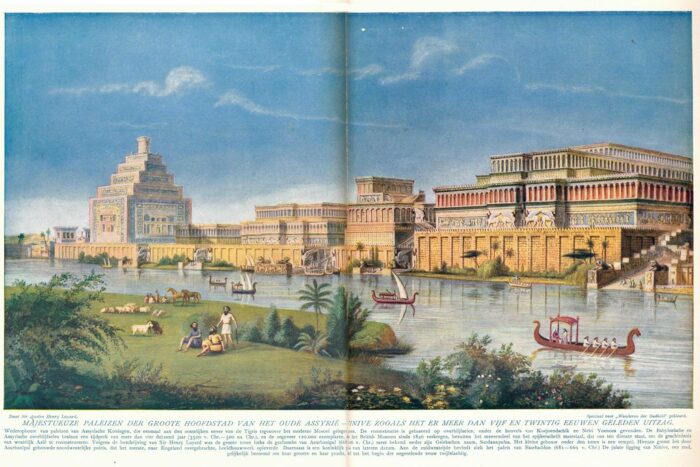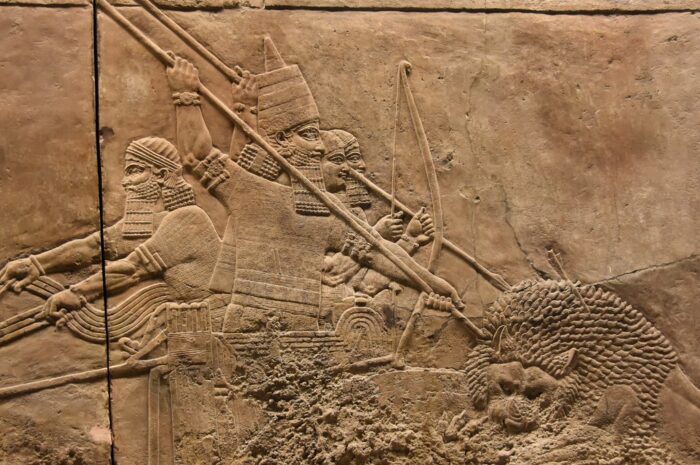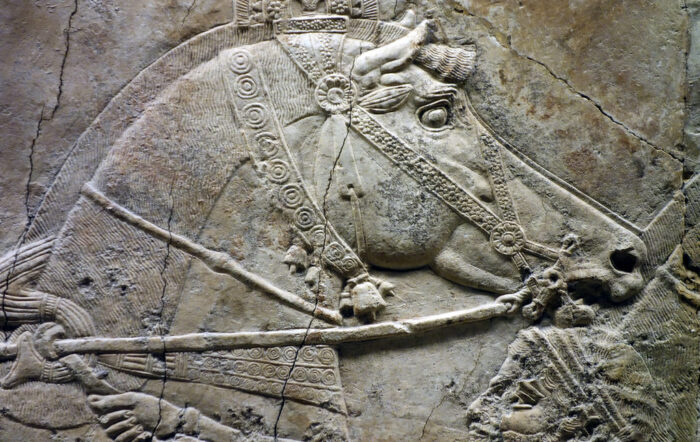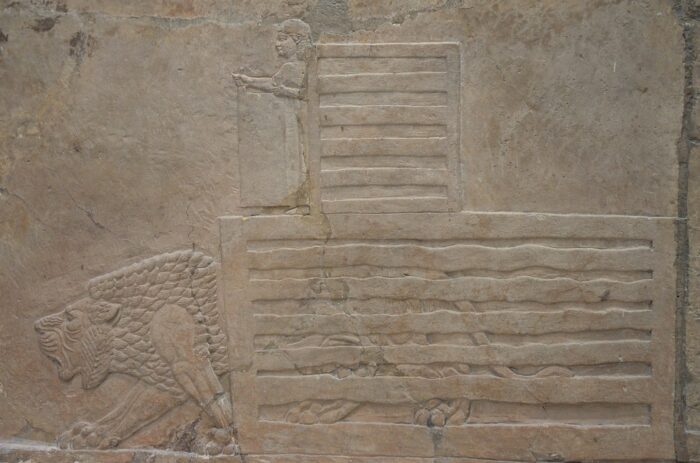Hunting lions was a ceremonial sport created by the King of the Assyrian Empire. Although the complete story of events will never be fully restored, certain reliefs have been able to provide some information. With these, we are able to answer some questions that you may build up. Why is the king the only participant? What did this signify, and how were those actions represented in the art? Did the actions depicted on the reliefs accurately display the true events? However, first, you need to understand the king and his land.
Assyrian Empire
Assyria was an empire located in Northern Mesopotamia (currently known as parts of Northern Iraq and Southeastern Turkey). It was once considered one of the largest empires in the world that was entirely military based where men were expected to be ready to fight at any given moment. This battle-based society was ruled under one king, Ashurbanipal.

Ashurbanipal was the king of the Assyrian Empire, who reigned from 669 to 630 B.C.E. Throughout his time, he lived in luxury as many buildings were built on a lavish scale; however, contradicting to my beliefs, this did not make him a weak ruler. He was known to be ruthless when dealing with his enemies and developed many combat tactics that helped expand his empire. These actions would most likely explain why he represented himself as a warrior king whose every action was for the sake of the people, even killing lions.
The Lion Hunt Reliefs
The lion hunt was a royal sport, created by King Ashurbanipal, to symbolize the king’s ability to protect his nation from any sort of harm. This hunt only allowed the King to participate, which provided him the opportunity to display his full significant level of powers and force. In many reliefs, Ashurbanipal is displayed heroically shooting the lions down with his bow and arrows. Because he felt the need to record such proud achievements, Ashurbanipal commissioned the construction of his reliefs.
These reliefs were said to have been placed on alabaster panel walls inside his Palace of Nineveh; however, they are currently displayed in a room at the British Museum in London.

On the reliefs, specifically, are carvings of King Ashurbanipal with his men attempting to protect him on chariots and horses. Much like in many other historic arts, the king can easily be spotted because of his head cap and big figure, which often demonstrates the importance and status of that figure.
Let’s Take A Deeper Look
The men play a big role in the carvings, as well. The fact that they are shown on the chariot protecting the king, expresses a great level of loyalty and order. Although King Ashurbanipal was known as a great figure, it was still deemed as some sort of dangerous event to face the lions alone. These carvings silently expressed the devotion that the men had toward their king.

Surprisingly, there had been much detail sculpted into these different animals such as the horse’s startled expressions, the lion’s pain, and the dog’s fierce appearance. Although there are many ways of interpretation, the thought that these sculptors took the time to carve these expressions means that there is a much bigger meaning behind them that we may never know. These carvings also represent the suffering of the lions and lionesses as they were stabbed and speared by the king. When trying to put my interpretation of the lion’s suffering expression, I believe it could represent Ashurbanipal’s raw bravery as he faces his enemies who die in agony.

Could this all have been staged?
These reliefs continue to go on expressing a dramatic and intense ritual with the king always coming out as the victor. However, there is one interesting speculation about the reliefs. It is believed that the king had the lions put into an arena, instead of going out to hunt them. The reason for this suspicion was due to one of the reliefs exposing a young man opening the cage for the release of a lion, while he is in the cage above. Although I believe that it does take away a lot of that dramatic feeling that was built up in the other panels, the main message is still being laid across. It most likely would have represented the equal amount of power that King Ashurbanipal was trying to express by just killing the lions.
Writer
Stephanie Ramos is a student in the Class of 2026 at Colgate University. She is a cat lover, no matter which species of cat, so she became interested in the topic of the Lion Relief. Although the overall Lion Hunt wasn’t her favorite subject, she grew to understand the unpredictable minds of historical figures and the meanings behind their actions.
